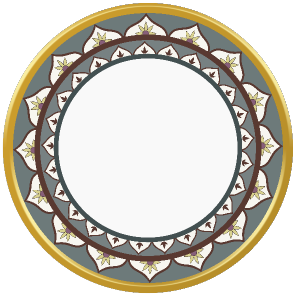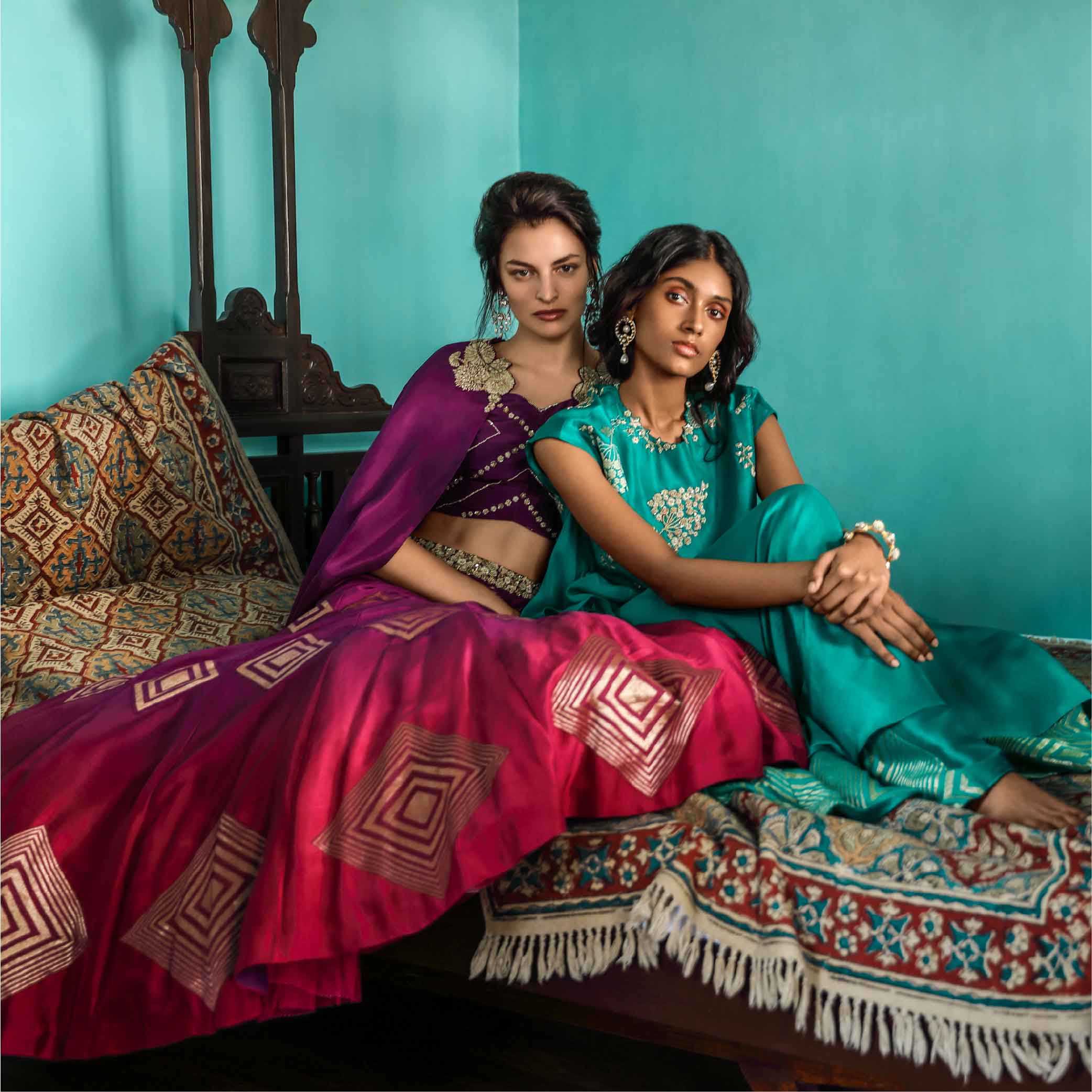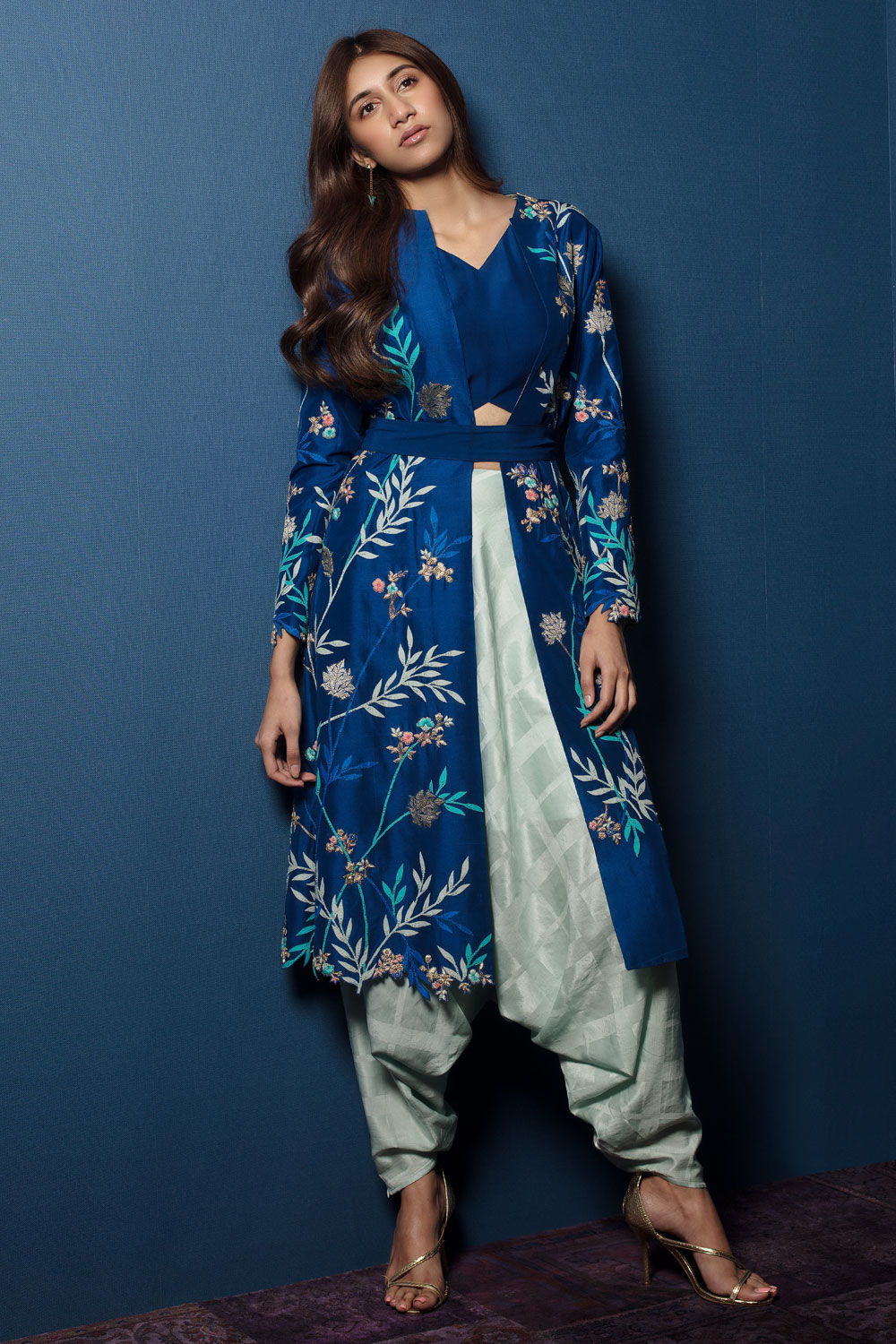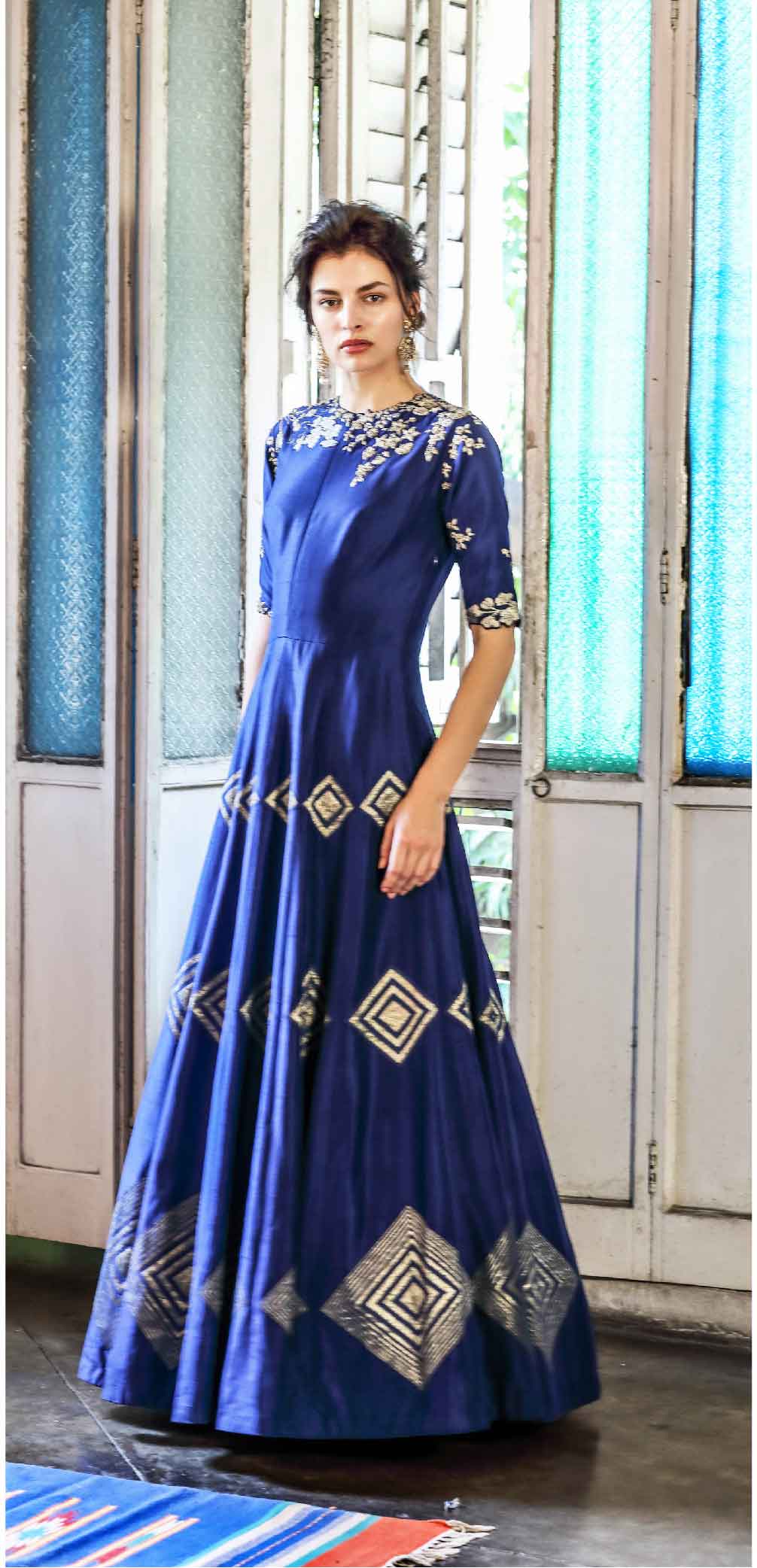

0


0

FASHION
By Admin
23 April, 2019

 The Japanese think about their art in a very different way. Japanese art has always been a major topic throughout the world. Like how their imagination is combined with their environment to make art. Slightly abstract with the use of flora-fauna, each piece comes with different elements and dimensions to it. Their art what we see has different layers to it but if noticed is always in perfect harmony. Adarsh picks up these small details from Japan itself as well as their art and uses it in his collections, so carefully that he makes each piece different from the other, never using the same pattern twice.
Since Japan was a secluded country for more than 200 years, they nurtured an aesthetic of their own which they later merged with foreign culture, art and more, this cycle changed their artwork into something very unique. The Japanese used to use brushes, brush strokes can be seen in all their artwork. Label Osaa by Adarsh aims to combine these Japanese art forms and the Indian art forms to create different designs as well as celebrate the Eastern culture.
The Japanese think about their art in a very different way. Japanese art has always been a major topic throughout the world. Like how their imagination is combined with their environment to make art. Slightly abstract with the use of flora-fauna, each piece comes with different elements and dimensions to it. Their art what we see has different layers to it but if noticed is always in perfect harmony. Adarsh picks up these small details from Japan itself as well as their art and uses it in his collections, so carefully that he makes each piece different from the other, never using the same pattern twice.
Since Japan was a secluded country for more than 200 years, they nurtured an aesthetic of their own which they later merged with foreign culture, art and more, this cycle changed their artwork into something very unique. The Japanese used to use brushes, brush strokes can be seen in all their artwork. Label Osaa by Adarsh aims to combine these Japanese art forms and the Indian art forms to create different designs as well as celebrate the Eastern culture. Adarsh sees each textile and each garment as a piece of art and gives individual attention to balance, colour, placement, and silhouette. Japan is known for being a spiritual land, hence it allowed their individual spirituality to come through in their artwork. The look and feel of each piece of their art give you a sense of tranquillity. The skills and art have always been very explorative without boundaries. This whole idea is one of the main reasons for Adarsh’s attractions to Japanese art. Like how the Japanese manage to take so many elements and put them together while still maintaining perfect harmony and balance with each one of them. This allows Adarsh to experiment with different techniques in one garment, be daring about using abstract placement of motifs instead of repetitive symmetrical placement of motifs, patterns, and prints on his pieces.
Ikebana, the Japanese flower arrangement art from the 6th century, was the muse and inspiration behind Osaa’s Ikebana collection. Designed by Adarsh whose creations bring an elegant mix of minimalistic and radical elements, this collection is an ode to the classical Japanese art of refinement. Ikebana is an exploration of floral balance through space and asymmetry. Each shade in the collection is related deeply to the art itself. The crystal blue water that infuses life, the lush green of leaves that evoke wilderness, the bright colours of flowers that herald spring, all are brought to life with handloom weaves, fusion silhouettes, intricate appliqué with zari and zardozi work on fluid silk, woven tissue, flat chiffon, and mulberry silk makes each piece a unique celebration of ‘the way of flowers’.
In continuation of his previous collection Adarsh’s 2018-2019 autumn-winter collection ‘Wisteria Lane’ also draws its inspiration from the east. This translates into his couture in the form of our signature abstract florals juxtaposed with geometric artworks that complement instead of clash.
Japan’s art styles and palettes weave themselves into Adarsh’s collections in a way that is also so distinctly Indian- a continuation of his signature style that fuses his inherent obsession with Indian and his love affair with all things orient. Like another collection of Adarsh which is Wisteria Lane, is inspired by the Japanese flower wisteria, which is also an important symbol in Shin Buddhism.
The starting point of the storytelling lies in the many charms of the wisteria – a flowering vine native to the Orient that draws you in with its heady perfume and luxuriant blooms. The wisteria is not simply a visual spectacle, mind you. Quite like a woman, the wisteria is more of a wildflower than a wallflower – both seek to grow nearly anywhere they go, both are spectacular.
The Wisteria Lane also gives you a glimpse of the ‘flower viewing’ customs in Japan that ask you to enjoy the transient beauty of blooms. Quite like the wisteria’s symbol in Shin Buddhism – that of the head drooping in prayer and quiet supplication.
A lot of importance is given to the plans and flora in Japan since the people there believe in living in harmony with nature. Just like that the Ikebana technique of arranging flowers is all about creating harmony between the flowers, the leaves, and the vase. A lot of other techniques have been drawn from this art form over the years. The Japanese take a lot of care of their surroundings and maintain their environment as well. They like to be in control of what is around them, and so Ikebana is also about keeping the arrangement in control so as to make everything look perfect. This art form takes many years to learn and a lot of people enjoy learning this.
Adarsh as a designer also draws inspiration from the artists of Japan, like Kitagawa Utamaro and his woodblock painting of large-headed women. Artist Hiroshi Yoshida, who is considered one of the greatest artists of the shin-hanga style, who painted everything from all around the world, is also one of Adarsh's favourites.
In fact, the Meiji period of the Japanese culture, where the traditional art met the modern art technique is also very inspiring.
The fact that there is so much heritage lies in the east in abundance makes designer Adarsh Makharia crave the amalgamations of arts of these regions. He feels, we in the East are self-sufficient and this shows in all his collections!
For such interesting updates on Indian fashion, follow us on Facebook, Instagram, and Twitter. Download our magazine Spunky Indian for exclusive stories.
Adarsh sees each textile and each garment as a piece of art and gives individual attention to balance, colour, placement, and silhouette. Japan is known for being a spiritual land, hence it allowed their individual spirituality to come through in their artwork. The look and feel of each piece of their art give you a sense of tranquillity. The skills and art have always been very explorative without boundaries. This whole idea is one of the main reasons for Adarsh’s attractions to Japanese art. Like how the Japanese manage to take so many elements and put them together while still maintaining perfect harmony and balance with each one of them. This allows Adarsh to experiment with different techniques in one garment, be daring about using abstract placement of motifs instead of repetitive symmetrical placement of motifs, patterns, and prints on his pieces.
Ikebana, the Japanese flower arrangement art from the 6th century, was the muse and inspiration behind Osaa’s Ikebana collection. Designed by Adarsh whose creations bring an elegant mix of minimalistic and radical elements, this collection is an ode to the classical Japanese art of refinement. Ikebana is an exploration of floral balance through space and asymmetry. Each shade in the collection is related deeply to the art itself. The crystal blue water that infuses life, the lush green of leaves that evoke wilderness, the bright colours of flowers that herald spring, all are brought to life with handloom weaves, fusion silhouettes, intricate appliqué with zari and zardozi work on fluid silk, woven tissue, flat chiffon, and mulberry silk makes each piece a unique celebration of ‘the way of flowers’.
In continuation of his previous collection Adarsh’s 2018-2019 autumn-winter collection ‘Wisteria Lane’ also draws its inspiration from the east. This translates into his couture in the form of our signature abstract florals juxtaposed with geometric artworks that complement instead of clash.
Japan’s art styles and palettes weave themselves into Adarsh’s collections in a way that is also so distinctly Indian- a continuation of his signature style that fuses his inherent obsession with Indian and his love affair with all things orient. Like another collection of Adarsh which is Wisteria Lane, is inspired by the Japanese flower wisteria, which is also an important symbol in Shin Buddhism.
The starting point of the storytelling lies in the many charms of the wisteria – a flowering vine native to the Orient that draws you in with its heady perfume and luxuriant blooms. The wisteria is not simply a visual spectacle, mind you. Quite like a woman, the wisteria is more of a wildflower than a wallflower – both seek to grow nearly anywhere they go, both are spectacular.
The Wisteria Lane also gives you a glimpse of the ‘flower viewing’ customs in Japan that ask you to enjoy the transient beauty of blooms. Quite like the wisteria’s symbol in Shin Buddhism – that of the head drooping in prayer and quiet supplication.
A lot of importance is given to the plans and flora in Japan since the people there believe in living in harmony with nature. Just like that the Ikebana technique of arranging flowers is all about creating harmony between the flowers, the leaves, and the vase. A lot of other techniques have been drawn from this art form over the years. The Japanese take a lot of care of their surroundings and maintain their environment as well. They like to be in control of what is around them, and so Ikebana is also about keeping the arrangement in control so as to make everything look perfect. This art form takes many years to learn and a lot of people enjoy learning this.
Adarsh as a designer also draws inspiration from the artists of Japan, like Kitagawa Utamaro and his woodblock painting of large-headed women. Artist Hiroshi Yoshida, who is considered one of the greatest artists of the shin-hanga style, who painted everything from all around the world, is also one of Adarsh's favourites.
In fact, the Meiji period of the Japanese culture, where the traditional art met the modern art technique is also very inspiring.
The fact that there is so much heritage lies in the east in abundance makes designer Adarsh Makharia crave the amalgamations of arts of these regions. He feels, we in the East are self-sufficient and this shows in all his collections!
For such interesting updates on Indian fashion, follow us on Facebook, Instagram, and Twitter. Download our magazine Spunky Indian for exclusive stories.